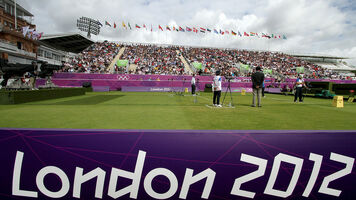Archery history: The sport that pioneered equality for women’s participation
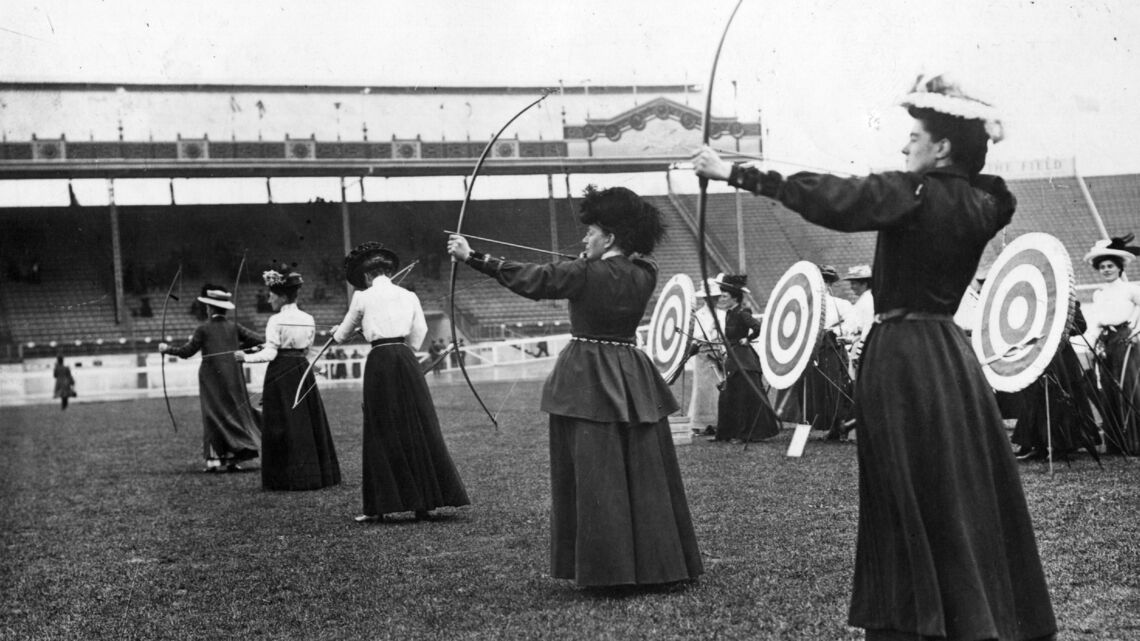
Archery has long been celebrated for gender equality in competition. Particularly in the modern era, women have taken an equal role in competition – and increasingly in governance as well.
The sport was among the first to include a women’s event at the Olympics – in 1904 – and World Archery was the first international federation to have a female president.
It is not a modern phenomenon, either. While the bow and arrow was arguably a symbol of power in ancient civilisations – representing warriors and kings – it was not one solely of masculinity. The myths of Artemis and Diana in classical Greece and Rome are that of a woman with a bow hunting. There is also the feminine mythology of the Amazons.
Royalty across Europe began taking up archery for sport in the Late Middle Ages.
Anne Boleyn, the second wife of English King Henry VIII, is said to have used archery to help seduce her husband and her daughter, Queen Elizabeth I, was also an archer. Later, the young Princess Victoria also dabbled, too.
Royal patronage aside, target archery grew rapidly across English in the 18th century for two reasons. Firstly, it met the requirements of the aristocracy being gentle and refined – and the activity fit in well with the romantic neo-medievalism that was popular at the time.
Crucially, it was also a sport where women could wear the extensive fashions of the day. Archery for women rapidly became an acceptable area to display marriageability. A later guide to country pursuits coyly remarked that “few exercises display an elegant form to more advantage”.
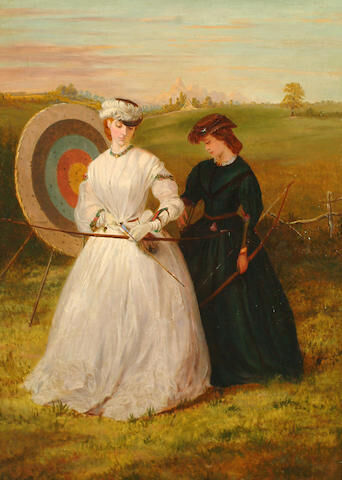
In 1787, “several young ladies” who shot with the Royal British Bowmen – the first British sporting society to admit women – were said to have “added to their conquests the hearts of young gentlemen of honour and fortune”, with the society responsible for the marriage of “not a few happy couples”, according to a newspaper report.
Obviously, by modern standards, this is not equality – or even acceptable – but in a contemporary light, it explains the growth of the sport, particularly in Europe.
The heyday of archery’s public popularity in Great Britain was the late-19th century. Archery was an arena for ostentatious display, and tournaments became common among both the elite and aspirational urban imitators, with large prizes and crowds of spectators.
In 1860, the Grand National Archery Society became the official governing body for the sport in England and defined its first competition round specifically for ladies: 48 arrows at 60 yards and 24 at 50 yards.
The bowyers and manufacturers of the day responded with a wide range of archery gear designed specifically for women, from low-poundage takedown longbows to leather arm guards with delicate quilting and silk padding. A rich lady archer – or archeress, as they were often known – would often use two different bows, one for each distance, carried to tournaments in a fancy oak box.
(It was around this time, with the founding of archery societies, that the tradition of Lady Paramount appeared. These days, in English competitions, the Lady Paramount is usually the prize-giver at the end. But the original goal, as the name suggests, was as a judge or arbiter of disputes, suggesting a strong knowledge of the rules.)
The more spectacular archery tournaments were usually held on private grounds of the landed gentry and were seen very much as a wider opportunity for socialising and courtship. Large tournaments invariably ended with a full-dress ball.
In other words, the sport had become something not followed for its own sake, but as an excuse for a large party and a respectable arena where men and women could meet. The novel Barchester Towers by Anthony Trollope, written in 1857, describes a country house fete with romance against the backdrop of an archery tournament.
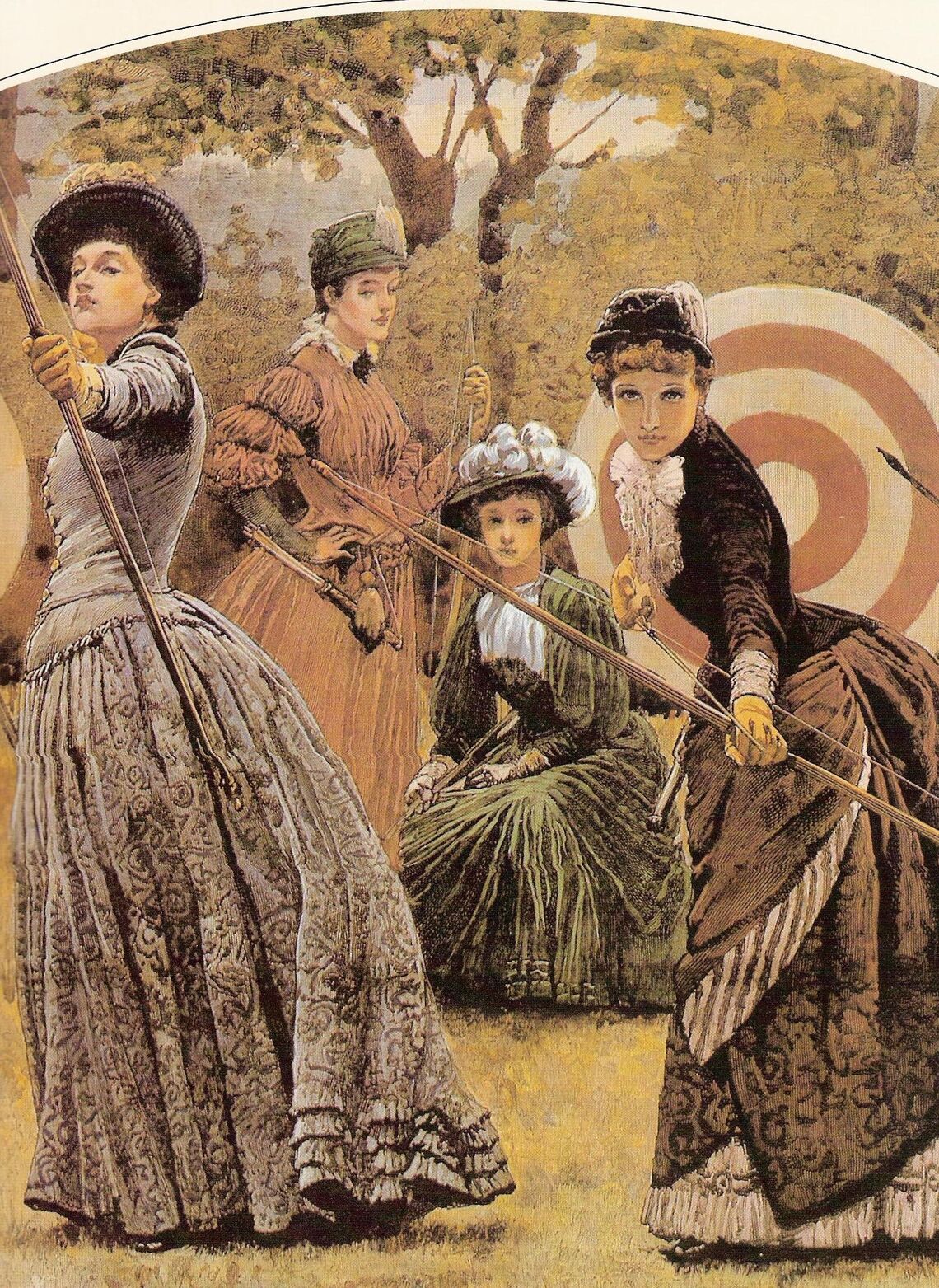
But champions emerged. Alice Legh was by far the most successful female archer of her day, winning the British national championship 22 times between 1881 and 1922. (Her mother also won it four times.)
Legh was the first female archer to describe her technique and philosophy in detail, finishing one treatise with: “a great secret is to be very quiet and rather deliberate in all your movements; never hurry, never pull up by jerks, do not talk or move your feet”.
She also praised the relatively low cost of the sport and the fact that, apart from some minor alterations to allow for more freedom of movement, it didn’t require much in the way of specialised clothing either.
When the Olympic movement emerged in the 1890s, archery was one of the first sports to allow women to compete. Not all Olympic sports were as welcoming in that era, and some have theorised that archery was perceived as acceptable partly because women could compete while wearing a dress.
Archery’s first modern Olympic competition was held in 1900. The first women’s event was held at the Games in 1904 in St Louis, USA, with America’s Matilde Howell taking the sport’s first gold medal.
At the tail end of the 19th century, archery’s popularity in the USA increased – and particularly at the collegiate level, where it was recommended for “a certain type of girl” who didn’t take part in more “vigorous” sports like hockey or tennis, according to a turn-of-the-century missive found at the University of Wisconsin.
That, again, displays as much about the mentality of the period as the sport itself.
In the 1870s, the Crescent City Female Archery Club was founded in New Orleans. It was one of the first sports organisations for women in the country.
The first Olympic Games in London in 1912 saw athletes organised as representing individual nations for the first time. The archery events were held in the infield of White City Stadium – as indeed were swimming, boxing and much else.
The British team was the only nation that fielded both male and female archers, with 25 women shooting alongside 15 men.
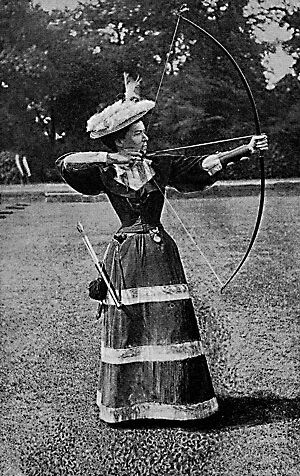
However, Legh, still the greatest archer in the home country, skipped the competition in order to prepare for the upcoming British championship – as it was then regarded as more prestigious than the Olympics.
The big star of the day was Lottie Dod, a direct descendant of Sir Anthony Dod of Edge, who commanded the British archers at Agincourt. Dod, aged 36, was already one of the most versatile female athletes of all time.
Her best sport was tennis and she became the youngest Wimbledon champion in 1887, taking the ladies’ singles title at age 15 – which is a record that still stands.
Dod won the title four more times before tiring of tennis and in 1894 she became one of the first women to attempt the Cresta Run at St Moritz, then made the newspapers once more for playing a cricket match on ice skates. She then took up hockey, mountain climbing and golf, winning the British ladies amateur championship in 1904.
“Little” Lottie Dod, as the papers dubbed her, had an equally gung-ho brother, William Dod, who also competed in the archery competition.
On Friday 17 July 1908, men’s and ladies’ competitions got underway. With both the weather and the attendance thoroughly miserable, and the wind echoing around the curved walls of the stadium, conditions were tough, and the first day’s shooting was stopped several times due to rain. The 1908 competition was the first to be filmed, and the short film that exists shows the dress of the day.
Dod took the lead on the first day with 348 points and 66 hits. The favourite was up against Sybil Fenton “Queenie” Newall, four months shy of her 54th birthday. After a grim, rain-sodden first day, Dod led by 10 points from Newall. But as the skies cleared the next morning, Newall steamed ahead in the 50-yard round, eventually beating Dod 688-642.
Dod’s collapse put her behind five other archers on score for the day but her total was enough for silver. Her brother William won the men’s competition, making the Dod siblings the first brother-sister Olympic medallists.
A week after the Olympic competition, Newall entered the British championships in Oxford to face Alice Legh, who thrashed the Olympic champion by 150 points into second place.
(Newall remains the oldest individual gold medalist in Olympic history, and it took 96 years for another Great Britain recurve women’s individual Olympic archery medal, with Alison Williamson winning bronze in Athens in 2004.)
The First World War and the Second World War changed the picture of history.
Archery featured in the Olympics between the two conflicts, in Antwerp in 1920, but only 30 athletes competed and all were men. The rules and competition were different again from earlier editions and that was partly, if not solely, the reason for World Archery’s founding as FITA in 1931.
The first two World Archery Championships, held back-to-back in 1931 and 1932, did not have competitions separated by gender. Instead, men and women shot against each other.
However Polish archer Janina Kurkowska-Spychajowa medalled at both, finishing second in 1931 and third in 1932. And a Polish team – comprising three women including Janina – also took silver in 1932.

She went on to win five world titles after different men’s and women’s events were brought in one year later, in 1933, 1934, 1936, 1939 and 1947.
Janina remains the most decorated archer in the championships’ history to date. She won 19 medals in total and the last came an incredible 24 years after the first when she helped Poland to a team bronze in Helsinki in 1955.
It would be another 17 years until archery returned to the Olympic programme. When it was reinstated in 1972, archery had an individual event for men and an individual event for women.
The number of medals has since grown but the equality has remained – and when the quota system was introduced for Atlanta in 1996, the 128 spots for archers were split down the middle, 64 for men and 64 for women.
World Archery’s sixth president was an historic one for international sport. Inger Frith, a British archer who shot at three world championships, was elected in 1961 after serving as vice president since 1953.
She was the first female president of an international federation. And she was also the president that successfully campaigned for archery to rejoin the Olympic programme.
Little remains of the sport’s history at this time except in the minutes of annual general meetings of World Archery – then FITA – and the results of world championships. This is an excerpt from the president’s report for congress in 1967:
“The news… in 1965 that archery was accepted on the Olympic programme was received with joy by archers around the world and… in 1966 it was added that ladies were allowed to compete as well (out of the 21 sports in the Olympic Games, ladies may compete in nine).”
In other articles written by Inger for the intermittent federation bulletin, she makes a point of mentioning the lack of women’s participation in 1920.
But with discussions on archery’s Olympic inclusion taken largely behind closed doors, there’s no documentation of the thought process – or any way to identify whether it was purely Frith championing equality. However, it seems likely, given archery’s gender split of 56-44 compared to the overall 1972 Olympic figure of 85-15, that she was at least partly responsible.
There are many more examples in modern archery of parity between men and women.
The available prize money on the Hyundai Archery World Cup has been equal since the international circuit’s inception in 2006. Mixed team competition, which will make its Olympic debut at Tokyo 2020, sees men and women compete together.
And archers have shot the same international distances since 2013 when the 1440 Round (previously known as the FITA) was retired. The highest scores for the current 70- and 50-metre rounds are close, too – although not identical.
(As of 1 August 2020, the recurve world record for 72 arrows at 70 metres is 702 for men and 692 for women; the compound world record at 50 metres is 718 for men and 713 for women.)
Archery should rightfully be proud of its role in pioneering women’s participation in Olympic sport as athletes and at the governance level. Incredible progress has been made over the last 100 to 150 years – and much of it much earlier than its sporting counterparts.
But there is still progress to be made. Work to ensure access, opportunity and reward are equal between men and women at all levels, in all countries, must carry on.






